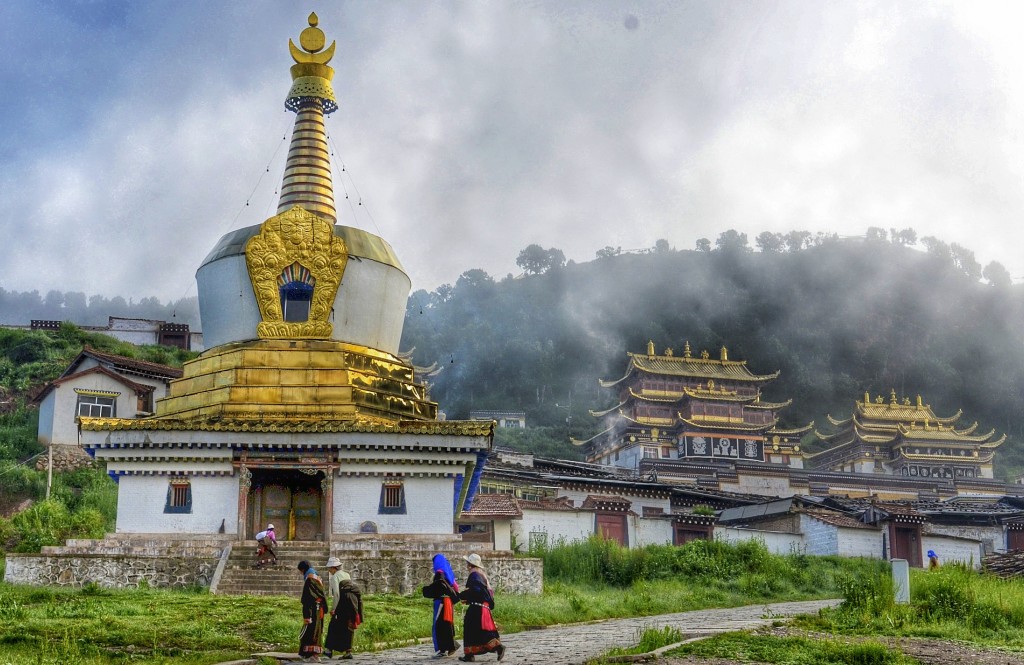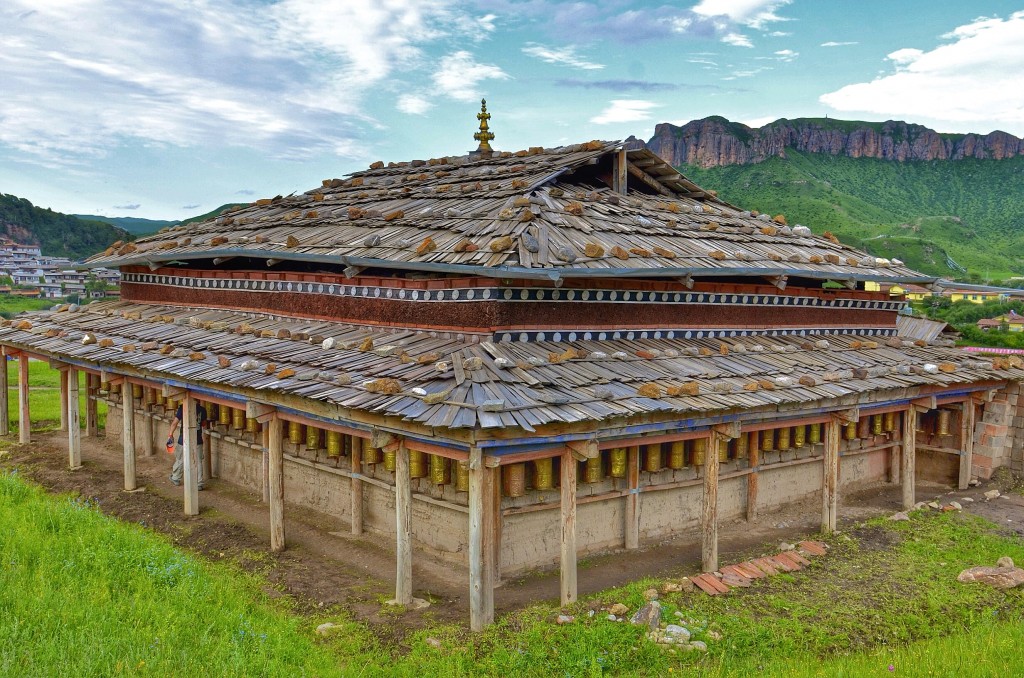
Langmusi, also known as Lhamo in Tibetan, is one of my favorite small towns in the Amdo region. Two large Buddhist monasteries, stunning mountains and excellent hiking/trekking await those who go here! Read this post for more details!
Langmusi, known in Tibetan as Taktsang Lhamo སྟག་ཚང་ལྷ་མོ་, or just Lhamo, is a small village straddling the border of Gansu and Sichuan in the Amdo Region of the Tibetan Plateau. Sitting at 3325m, Langmusi lies in a beautiful valley surrounded by alpine forests and amazing mountains. The town only has a population of around 3500 to 4500, with more than 1100 of the people belonging to the two monasteries found in the village. During Tibetan New Year (Losar ལོ་གསར་) and during other important festivals throughout the year, many pilgrims can be found going to Langmusi from other areas in Amdo. These pilgrims often prostrate to the ground every 3 steps all the way to the monasteries. The journey for them can take several weeks or even months. info@thelandofsnows.com


Taktsang Lhamo (Langmusi) in the winter time
Kirti Monastery, on the Sichuan side of the village, is home to around 750 monks. Behind the monastery is a gorge with several old meditation caves. In Tibetan, “Taktsang” means “Tiger Cave” and a short hike behind Kirti Monastery will bring you to the caves for which the town is named. Hiking behind the monastery is one of the highlights of the area. Even if you don’t plan on going into the monastery, you will most likely have to pay the 30 RMB entrance fee in order to hike behind the monastery.
Sertri Monastery, on the Gansu side of the village, is home to around 350 monks. It is the higher of the two monasteries and sits in a less impressive setting than nearby Kerti Monastery. There is a pilgrimage kora around Sertri. It is best to go in the morning as there are normally many Tibetan pilgrims also doing the kora. The entrance fee to Sertri Monasery is 30 RMB per person. If you follow the paved road past Sertri, it leads to several small villages home to Tibetan herders. These families are quite friendly and are worth the extra hike to reach.


Early morning clouds above town
Horse Trekking
The main reason people go to Langmus is for the excellent hiking and horse trekking. As stated above, there is excellent hiking behind Kirti Monastery. The Langmusi Tibetan Horse Trekking company arranges quality horse treks in the area. They arrange everything from 1 to 5 day treks to the surrounding mountains and nomadic grasslands of the region. The company is half-owned by Kelsang, who also owns the Langmusi Hotel located across from the trekking company and a friendly Chinese woman named Li Yi.
Kelsang is a local Tibetan who knows the area well and is quick to help with any travel related questions you may have. The horse treks are led by Tibetan guides who also know the area well. In my opinion, the horse treks in Langmusi are better than those found in nearby Amdo areas of Jiuzhaigou or Songpan as the treks in Langmusi go through very authentic and traditional Tibetan nomad areas.
Contact the Langmusi Horse Trekking Company to arrange horse trekking. When you contact them, tell them that I recommended you to them. info@thelandofsnows.com

Old prayer wheel temple

Nomad tent along a horse trek from Langmusi in the Amdo region

Hotels and Restaurants
Langmusi, despite being small, has quite good facilities for travelers. There are several inexpensive guesthouses to choose from (I recommend the Langmusi Hotel located across from the horse trekking company) as well as restaurants. The Black Tent Cafe serves good breakfast and good coffee. It is located across the street from the Langmusi Horse Trekking Company on the second floor. The Dong Zan Tibetan Culture restaurant, located across the street from Leisha’s Restaurant. It is a great Tibetan owned restaurant that serves great Tibetan and Chinese food. They have large screen TV’s and also offer free wireless internet.
If you have any questions about travel in the Langmusi area or any other region of the Tibetan Plateau, feel free to send me an email via info@thelandofsnows.com.

